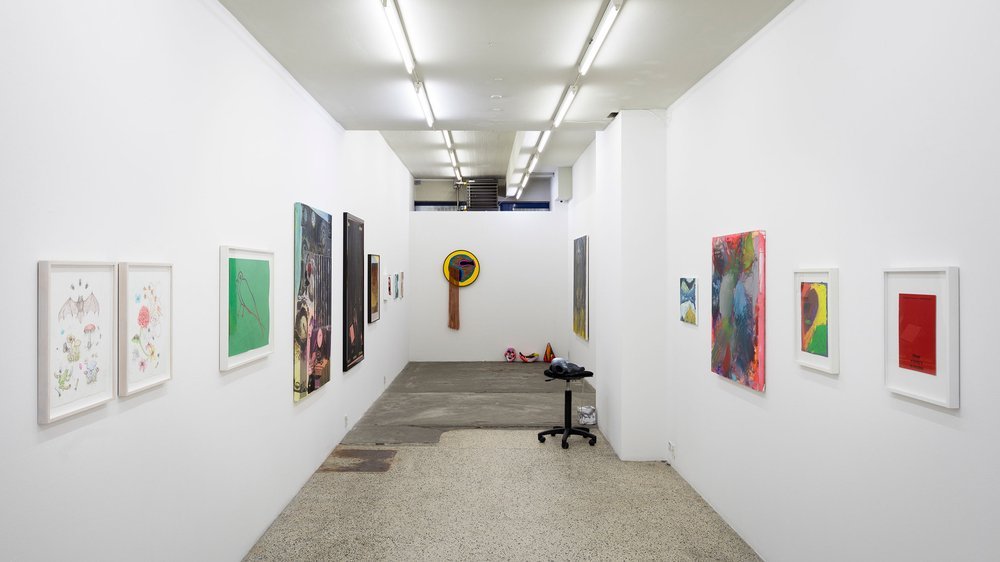Diving into a vivid chromatic ocean of ink.
*Archive Article: Originally published in the magazine Blacklisted Copenhagen on February 22, 2018
Staring down from on high into undulating waves of color. That is the feeling you get when looking at artist Mark Lovejoy’s photographs. Yes, you heard right, his final medium is not a large canvas dripping with color, as one might assume when feasting your eyes upon his work. It’s the camera. Lovejoy is a shutterbug, not a painter. And contrary to what you might think, the source material for his artist photographs–the undulating waves of color–are actually quite small.
He mixes ink on a surface no more than 25cm big and takes macro photographs, capturing the up-close life of the colorful viscous fluid as the colors play with each other.
Having learned this, I was immediately driven by a million questions regarding his process and output, and I resigned myself to do some internet stalking to get in touch with Lovejoy. When eventually finding myself on his website, a Tumblr account that has a retro feel of a website build 15 years ago, I was a little unsure if Lovejoy was still active. Had I stumbled across an artist that was no longer producing? In discovering that the works posted on his website were recently dated, I resigned to press on and was soon in contact with a lovely gentleman who was willing and eager to answer some of my lingering questions about his work.
INTERVIEW
So, Mark, you give me a little background on how you developed your vivid style?
I was born in Alpine, Texas, son of an itinerant geologist. I grew up with the weather & landscape of the North American west. I traveled around the world, and am self-taught in just about everything I know how to do.
Making pictures is, without a doubt, what keeps me sane.
As a commercial printer and photographer, with a background in geology & science – I, like any artist, distill my experience and use the tools at my disposal. My visceral sense of landscapes, topographies, wind, water & bio-forms – combined with the most mundane of materials & tools, infused with light, evoking the spirit of the universe. Fire, ice, heartbreak & breathtaking beauty, a maelstrom of color & energy – landscapes, literal & figurative, a spontaneous outpouring of sensuality & desire. Abstraction leaves my story open to other’s interpretations.
One might argue that heartbreak, sensuality, and desire are somewhat ethereal and subjective concepts when loosely used to describe abstractness, so can you elaborate a little further on how you let these concepts influence your process of creation?
Art is a rather ethereal & subjective concept. Sensuality & desire are wellsprings of creative energy. I sometimes call my images desirachromes or erochromes. Color comes from life & the world around. The composition is partly “found” & partly carefully composed of “found” material.
I want to take something unknown & make it more unknown. Anything, looked at differently, looks like something else. An abstract work of art is an impression of thought, emotion, feeling, idea or energy in much the same way as a representational painting or a photograph is an impression of an object, place or action. Any work of art is an abstraction in that no work is the actual thing.
The OED defines abstract art as “art that does not attempt to represent external reality but rather seeks to achieve its effect using shapes, colors, and textures.” I’m not sure where “external reality” takes over from “internal” reality or just regular old “reality.” The fact is that all of my images in some way or other reflect “reality” (a slippery concept). How can they do otherwise?
I will admit that experiencing your work in a digital format, leaves me curious as to the mediums in which you work. Can you take me through the process of how you create work?
As a commercial pressman, I mixed a lot of colors – weighing grams & fractions of grams of ink. Like a painter, my paint mixed on a glass plate, milled & rolled, spilled out on paper – opaque white, rubine red, metallic silvers & golds, a little black, a little Pantone green or process blue. The process always fascinated me.
A few years back I bought a digital camera and some commercial printing inks and started fooling around. What I had expected to be a photo shoot turned into a six-year project with over 30,000 images.
My method is relatively straightforward. I mix ink on a 9″ diameter palette. Using various implements, tools & subterfuges, I manipulate the inks, place the palette on my copy stand, light it & shoot macro images. It’s like a microscopic view of a master painter’s brush stroke. The magic is in the lighting, which of course is always true in photography & painting – the capture & release of light.
Based on what you’ve described, what do you then consider the final product – the painting, or the photograph?
There is no painting. I am a photographer, not a painter. Anything can be the canvas; light is the paint.
The palettes are repeatedly mined for derivatives going through multiple iterations before, ultimately, being discarded. The light of course comes & goes – what is left? The photograph.
You have a very peculiar way of naming your work, can you tell me about that?
I’m not sure it’s so peculiar. Many artists label their work with numbers or “untitled.” Titling my work has always been a bit of a problem for me. I see something in an image, but I find that people see something different.
Titling imposes what I see, on you. Abstraction leaves my story open to your interpretation, and, ultimately we find that as different as all our stories are they are all the same.
The titles themselves are eminently practical – image numbers from my Nikon. An image number like this #0000 is the original RAW file processed in photoshop. An image numbered like this #0000-0000 is an image composited from multiple shots. #0000B means that the original image has been cropped & this is the cropped copy. #0000b comes from the fact that after 10,000 images Nikon starts over at 0. I have over 30,000 images on file so you can see that possibly there could be four images with the same number. If I crop an image & it is a duplicate number then it becomes #0000bB.
The real beauty of the titling is that it allows me to easily find any image.
On your website you have a quote from “The Pedagogy,” but I was unable to find any reference to that anywhere. Can you tell me about that, and why it is significate to you?
It’s interesting that you would ask. That “quote” has been there for almost seven years & no one has ever mentioned it until now. The Pedagogy is a journal that I have kept for many years as I shoot – a facetious pedantic conceit that I am some authority on anything. Which I am not.
Do these sparks of thought that you have been documenting for the last seven-year correlate with the work that you are creating at the time – or are they more stream of consciousness?
I would not call them documentation. I love language (I’m a sensualist – language is a sensual medium – combinations of letters, word’s sounds can have the same effect as combinations of colors & light) but I think it is essential to understand that as a photographer, I think in images. Having said that, these words are connected to the creative process – how could they not be?









